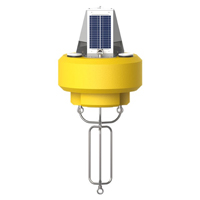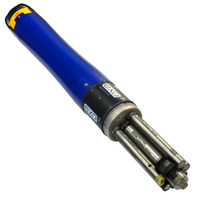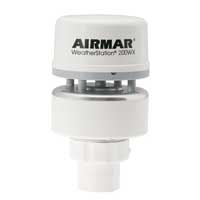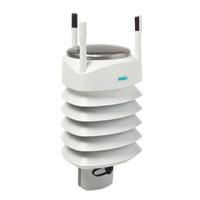 Lake associations and individual researchers teaming up means more comprehensive and impactful monitoring programs. Lake Lillinonah in Connecticut has the benefit of being the subject of many researchers’ work as well as being under the protection of Friends of the Lake (FOTL).
Lake associations and individual researchers teaming up means more comprehensive and impactful monitoring programs. Lake Lillinonah in Connecticut has the benefit of being the subject of many researchers’ work as well as being under the protection of Friends of the Lake (FOTL).
Jen Klug, Professor of Biology in the College of Arts and Sciences at Fairfield University, is one of these researchers and works with FOTL to better understand what conditions threaten Lake Lillinonah—a mission shared by FOTL.
Challenge: Nutrient Loading and High Production in Lake Lillinonah
Lake Lillinonah is in particular need of protection due to excess nutrient loads leading to hypoxia and algal blooms. The goal behind monitoring the lake is to help provide the FOTL with water quality data to help support their advocacy.
Advocates like Rebekah White and Greg Bollard, two members of FOTL, work with Klug to gather lake data and then present that information to the public and other stakeholders in order to protect Lillinonah. White works more closely with Klug, maintain the equipment and sampling Lake Lillinonah, while Bollard works more closely with policymakers and the public.
 “Many years ago, we realized that Lake Lillinonah had no voice or representation, nor did it have any sense of community among users and residents. FOTL was created to help build a platform and become ambassadors for the lake,” explains Bollard, one of the founding members of the organization.
“Many years ago, we realized that Lake Lillinonah had no voice or representation, nor did it have any sense of community among users and residents. FOTL was created to help build a platform and become ambassadors for the lake,” explains Bollard, one of the founding members of the organization.
Due to excess nutrient concentrations, Lake Lillinonah is listed as impaired under the Clean Water Act and experiences algal blooms and hypoxia, making protecting and restoring the lake a high priority for the surrounding towns—that’s where the monitoring program comes in.
Solution: Monitoring Lake Lillinonah in Real-time
While most lakes experience high nutrient loads due to their proximity to agriculture and frequent exposure to runoff, Lake Lillinonah is an impoundment with some urban, agricultural, and wastewater pollution. Because of this, Klug and the FOTL monitor lake conditions throughout the year to see how seasonal dynamics and nutrient loading influence Lake Lillinonah.
 A CB-450 data buoy equipped with a YSI EXO 2 sonde, temperature string, and an additional Dissolved Oxygen (DO) sensor at the bottom of the string collects vital data that supports future research efforts and immediate protections for the lake.
A CB-450 data buoy equipped with a YSI EXO 2 sonde, temperature string, and an additional Dissolved Oxygen (DO) sensor at the bottom of the string collects vital data that supports future research efforts and immediate protections for the lake.
Because algal blooms and hypoxia are the main concerns for the lake, the sonde is equipped with temperature, DO, pH, and total algae sensors, all of which monitor the parameters most associated with harmful algal blooms and their impacts on aquatic systems.
In addition to the nutrient loading from nearby sources, climate conditions can play a significant role in water quality. The buoy is equipped with an Airmar 200WX, while the on-shore system houses a Vaisala multi-parameter weather station. A water level sensor is also deployed on the lake to help determine whether certain recreational activities are possible.
Benefits: Informed Management and Powerful Advocacy
The implementation of real-time systems reshaped how the lake was studied. Prior to the deployment of the buoy, the lake was sampled once a month at best, which provided some data but lacked details for such a dynamic system. The buoy helps track chemical and physical conditions in real-time, collecting and updating data every 15 minutes.
 “The buoy totally changed our understanding of the physical structure of the lake and how dynamic it really was. As an example, we can have some years where we don’t see hypoxia at all and years where the bottom is hypoxic for six weeks, which may not be long for some lakes, but it’s pretty long for Lillinonah,” states Klug.
“The buoy totally changed our understanding of the physical structure of the lake and how dynamic it really was. As an example, we can have some years where we don’t see hypoxia at all and years where the bottom is hypoxic for six weeks, which may not be long for some lakes, but it’s pretty long for Lillinonah,” states Klug.
Challenge: Worsening Water Quality and Water Insecurity
More data means that the FOTL has more information to present to stakeholders when advocating for changes in lake protections and resource management. With a more comprehensive understanding of the lake, Klug and the FOTL can continue to improve their research approach and defend it.
“Friends of the Lake—their advocacy is critical—they’ve used the data to talk to the Department of Energy and Environmental Protection, and they’ve leveraged the data that we’ve collected to advocate for reductions in nutrient loading,” explains Klug.
Bollard adds, “Many times progress can feel very slow when working with policy changes. However, the greatest satisfaction is to witness the improvement over time and realizing that when a body of water has ambassadors, change and improvements can happen.”
Equipment
The NexSens CB-450 Data Buoy is designed for deployment in lakes, rivers, coastal waters, harbors, estuaries and other freshwater or marine environments.
The YSI EXO represents the next generation of water quality instruments from YSI. The EXO2 sonde includes six sensor ports and a central anti-fouling wiper option.
The NexSens TS210 Thermistor String provides high precision temperature measurements for profiling in lakes, streams, and coastal waters.
The Airmar 200WX is a compact weather station ideal for moving platforms. The sensor outputs apparent and true wind, barometric pressure, air temperature, GPS location, and more.
The Vaisala WXT536 Multi-Parameter Weather Sensor simultaneously measures air temperature, humidity, pressure, rainfall and wind in a compact platform with optional heating.





